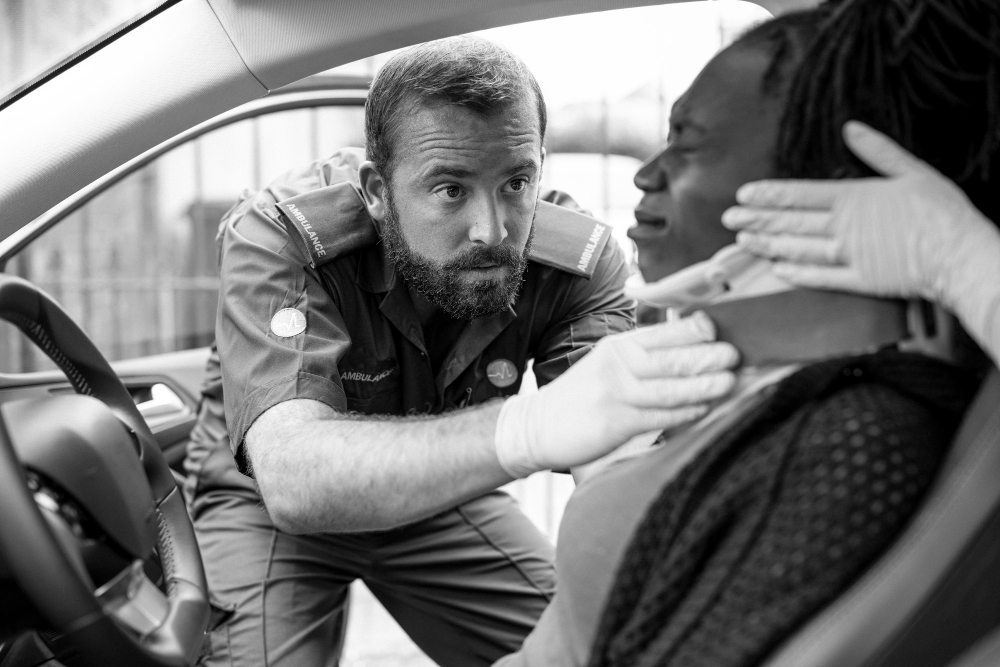Accidents can happen anywhere — on the road, at work, or even while shopping. If you are hurt in Texas, knowing what steps to take right after the incident can make a big difference in protecting your health and your rights. Many people feel confused and unsure about what to do next, and that delay can hurt their case.
Step 1: Get Medical Help Immediately
Your safety and health come first. Even if you think your injury is small, see a doctor right away. Some injuries may not show symptoms until hours or days later. A medical visit creates an official record of your injury, which can be important if you later need to prove what happened.
If you are in a serious accident, call 911 or ask someone to call for you. If you can move without making your injury worse, go to the emergency room or an urgent care center. Keep all medical reports, receipts, and test results in one safe place.
Step 2: Report the Incident
Reporting the incident is important for both your safety and your legal claim. How you report depends on where it happened:
- Car accident: Call the police and get an official accident report.
- Workplace injury: Tell your supervisor right away and fill out any required injury forms.
- Public place accident: Inform the manager or property owner and ask for a written report.
Get a copy of the report or at least the report number. This document can help confirm the details of your case later.
Step 3: Gather Evidence
Collect as much information as possible while the scene is fresh. If you are able, take clear photos of your injuries, the place where the accident happened, and any hazards or damages. Capture things like skid marks, broken equipment, or unsafe conditions.
Also, write down what you remember about the event — the time, weather, and anything unusual you noticed. Memories can fade quickly, so doing this right away is important.
Step 4: Get Witness Information
Witnesses can provide important details that support your story. If anyone saw what happened, ask for their name, phone number, and email address. Keep this list safe. A witness statement can help confirm what happened and counter any false claims.
Step 5: Be Careful When Talking About the Incident
It is natural to want to talk about what happened, but be careful. Avoid posting about it on social media or making public comments. Insurance companies and opposing parties can use your words against you, even if you think they are harmless.
When talking to the other party’s insurance company, give only basic facts. Do not admit fault or guess about details. You can say you are still getting medical treatment and that you will share more information later.
Step 6: Keep a Personal Injury Journal
Start a simple journal where you record your pain levels, medical visits, treatments, and how the injury affects your daily life. Write down if you miss work, can’t sleep well, or have trouble doing normal activities. This record can help show the full impact of your injury.
Step 7: Know the Time Limits
In Texas, there is a deadline for filing a personal injury claim. For most cases, you have two years from the date of the accident. Waiting too long could mean losing your right to recover damages.
Even if you think you have plenty of time, it is better to start the process early. This gives you more time to gather evidence and prepare your case.
Step 8: Understand the Types of Damages You May Claim
You may be able to recover different types of damages, such as:
- Medical expenses — hospital bills, medications, physical therapy
- Lost wages — money you missed out on because you couldn’t work
- Pain and suffering — physical pain and emotional distress
- Property damage — repairs or replacement for damaged items
Knowing what you can ask for can help you understand the value of your case.
Step 9: Talk to an Experienced Personal Injury Lawyer
While some people handle small claims on their own, many injury cases can get complicated. An experienced lawyer can review your case, explain your options, and deal with insurance companies on your behalf. This can give you more time to focus on healing while protecting your rights.
When looking for a lawyer, find someone with experience in handling cases similar to yours. Ask about their approach, past results, and how they will keep you updated.
Step 10: Stay Consistent With Medical Treatment
Follow your doctor’s advice and attend all scheduled appointments. Gaps in treatment can make it seem like your injury is not serious. Consistent medical care shows that you are taking your recovery seriously and gives you a stronger case.
Step 11: Keep All Documents Organized
Put all your medical records, bills, police reports, witness contacts, and photos in one folder or file. Having everything in one place makes it easier for you and your lawyer to find what is needed.
Step 12: Take Care of Your Well-Being
Injuries can take a toll not just on your body but also on your mind. Talk to friends, family, or a counselor if you feel stressed or anxious. Recovery is about both physical and emotional healing.
Protecting Your Health and Rights After You’re Injured
Being hurt in Texas can be overwhelming, but knowing what to do after the accident can make the process easier and protect your rights. By getting medical help, keeping records, and seeking the right legal support, you give yourself the best chance of recovering both physically and financially.
If you need guidance, Hurt In Houston has experience helping people in situations just like yours and can provide the support you need to move forward.
